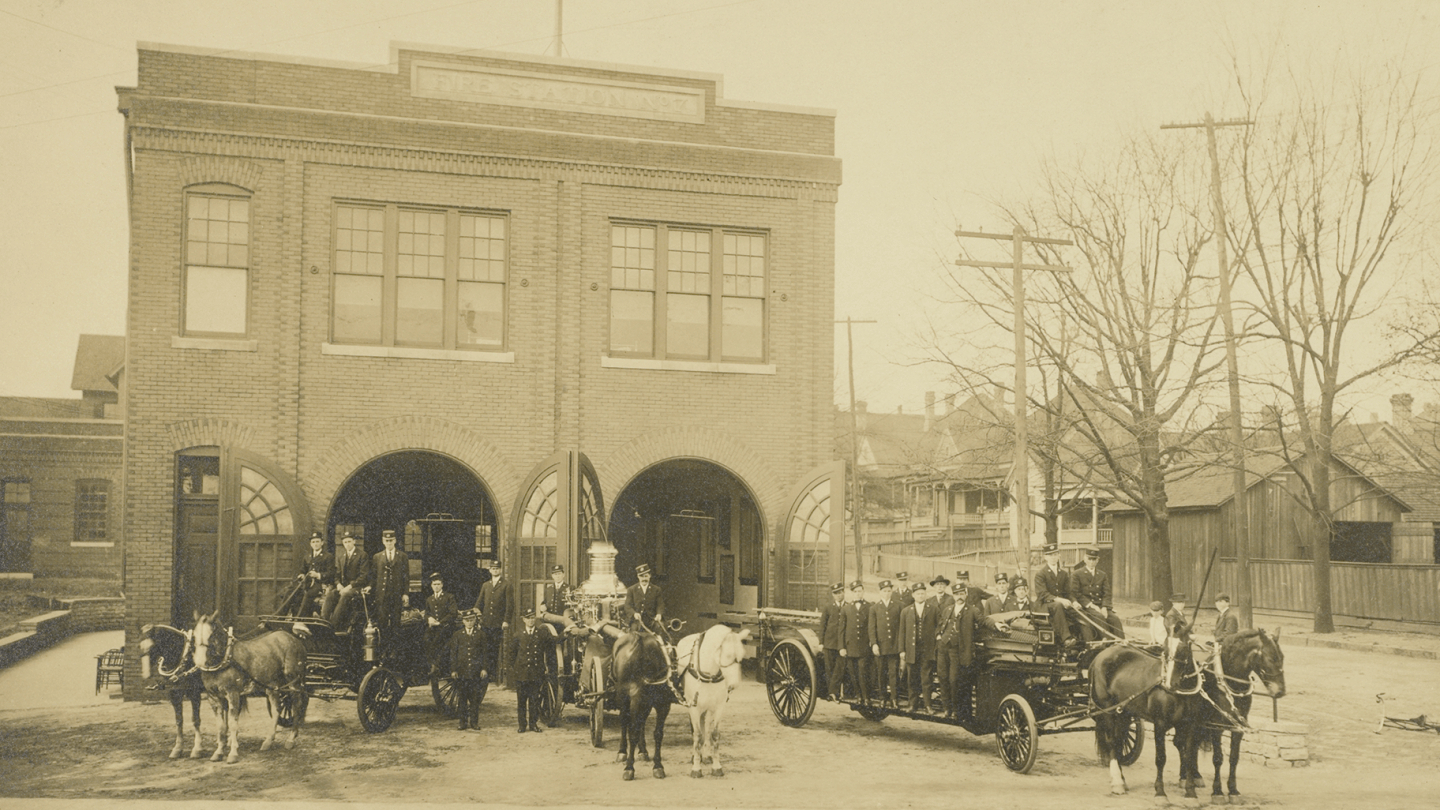
Atlanta’s Fire Station No. 7
The beginning of fire protection in Atlanta can be marked with the 1848 bucket brigade ordinance, which was implemented as the population surged to nearly 2,000. Volunteer fire companies served the city up until 1882 when professionals began to be hired. Throughout the late 1800s, municipal services struggled to keep up with the population that was nearly doubling every ten years.
At the turn of the 20th century, the city had failed to apply technological advancements to the fire department. They had not yet motorized, and alarms were still transmitted by telegraph boxes on street corners, not by telephone. Fire fighters had to rely on their horses, and their equipment was often only as good as the stamina of their horse. Although many large fires broke out in the early 20th century, the Atlanta Fire Department’s greatest challenge was the Great Fire of 1917.
Great Fire of 1917
May 21, 1917, was a busy day for firefighters already, when an alarm came in around noon for the Fourth Ward there had already been fires in West End, Downtown, and near Oakland Cemetery – resources were stretched. A warehouse had caught fire near Decatur and Fort Streets, and the dry conditions and strong winds that day made it impossible for the firemen to contain the blaze, even with backup. The fire caught along the wood shingled rooftops that dominated in the area and spread quickly to the north and northwest.
10 hours later the fire was contained through the help of firemen and equipment from neighboring counties and states, and judicious use of dynamite. Over 50 blocks had been completely burned to the ground, leaving only a forest of chimneys. Other houses were destroyed or damaged from the dynamite, a last ditch effort by then Mayor Asa Candler to save the new housing developments just south of Piedmont Park. Only one death was attributed to the fire, Bessie Hodges, who was reported to have had a heart attack upon seeing her house burning.
Remaining chimneys after the Great Fire.
Over 300 acres from Decatur Street to Ponce De Leon Avenue, and bounded by Fort Street to the west and Randolph Street to the east were laid bare by the fire. This area was home to many businesses, and residences of Atlantans of both African American and European descent. While the first responders did not delineate support during the fire, the aid that was offered after soon segregated the population of this area. African American families sought shelter in the surviving churches, homes, and the Auburn Avenue Odd Fellows Hall, meanwhile, white families were offered tents in Piedmont Park to the North and cots in the nearby auditorium through the Red Cross.
The Atlanta Journal reported that there were 10,000 homeless people (about 5% of the population of the city at that time) and 1,563 homes had been destroyed (it was closer the 1,900 structures). Empty houses in the Atlanta area, even out in Marietta, were offered up, rent free, for 30 days. Developers jumped at the chance to buy up lots along Jackson and Boulevard, offering the first payment on a house in Druid Hills in exchange for the deed to a lot.
Residents gathering remaining belongings.
As residents were allowed to return to their devastated homes, it became clear that the area would be never be the same. African American residents were kept away from the rubble of their homes and largely reported to be looters. They were threatened with being shot if they trespassed during the martial law period that followed. White homeowners returned to the charred remains to pick out anything that might have survived the fire.
Amidst cries from prominent city figures to segregate the burned area via a park, low income housing projects were built in the southern area of the fire, an area that had been called Mississippi Bottom, and was later called Buttermilk Bottoms. Lots along Boulevard and Ponce de Leon Avenue turned into apartments, and commercial strips quickly took over Edgewood and Auburn Avenues to take advantage of the street car lines. Many African American residents displaced by the fire moved to the impoverished West End area, while white residents sought homes in the newer neighborhoods to the north.
The fire prompted significant changes across the city, within a year of the fire the Atlanta Fire Department was completely motorized and an ordinance outlawing wood-shingle roofs passed in June 1917.